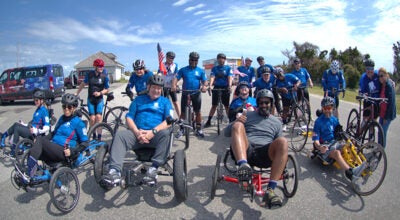Dare County and state COVID-19 cases increase
Published 1:01 pm Thursday, June 11, 2020
|
Getting your Trinity Audio player ready...
|
Dare County lab-confirmed COVID-10 cases jumped to 32 as of June 9.
Of that number, 13 are male and 19 are female. Some 18 cases are 50 years old or older, 10 cases are in the age bracket 25 to 49 and the remainder are less than 24 years old.
County residents reported with COVID-19 number 22 with 17 recovered, four in home isolation and one death. Of the non-residents, four have recovered, one is in isolation in Dare County and five were transferred to isolation in home counties.
On June 6, the North Carolina Department of Health and Human Services reported the state’s highest one day number of laboratory-confirmed COVID-19 cases with 1,370 cases reported. The state’s experts say the numbers increased due to community transmission of COVID-19.
Other metrics that the state is watching also increased. The percent of tests that were positive climbed to 10%. This metric is based only on labs that report electronically to the state. In addition, hospitalizations have exceeded 700 for three of the past five days.
As of Tuesday, June 9, the state has 36,484 lab-confirmed cases of COVID-19. Statewide deaths have climbed to 1,026.
Hospitalizations on Tuesday numbered 774 people.
Of those hospitals reporting, 25% of beds remain available statewide, 17% of Intensive Care Units are available; and 74% of ventilators in the state are available.
The state has issued updated guidelines for testing. The guidance recommends that clinicians conduct or arrange for diagnostic COVID-19 testing for:
– Anyone with symptoms suggestive of COVID-19.
– Close contacts of known positive cases, regardless of symptoms.
– The following groups are some of the populations with higher risk of exposure or a higher risk of severe disease if they become infected. People in these groups should get tested if they believe they may have been exposed to COVID-19, whether or not they have symptoms.
– People who live in or have regular contact with high-risk settings (e.g., long-term care facility, homeless shelter, correctional facility, migrant farmworker camp).
– Historically marginalized populations who may be at higher risk for exposure.
– Frontline and essential workers (grocery store clerks, gas station attendants, child care workers, construction sites, processing plants, etc.) in settings where social distancing is difficult to maintain.
– Health care workers or first responders (e.g. EMS, law enforcement, fire department, military).
– People who are at high risk of severe illness (e.g., people over 65 years of age, people of any age with underlying health conditions).
People who have attended protests, rallies or other mass gatherings could have been exposed to someone with COVID-19 or could have exposed others. Testing should be considered for people who attended such events, particularly if they were in crowds or other situations where they couldn’t practice effective social distancing.
RECENT HEADLINES:
North Carolina Ferry System to increase service on Hatteras route





